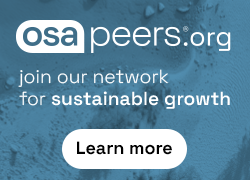This article is available in
.png)
Understanding and complying with EUDR – 4 key considerations
From 30 December 2025 organisations (legal entities) involved in marketing cattle, cocoa, coffee,Palm oil, Rubber, Soy, Wood or derivative finished goods from any of them within the European Union must be aware of the European Union Deforestation Regulation (EUDR). If you think your organisation is one of them, keep on reading because being compliant is not a trivial task, as it requires the collective effort of all (stakeholders) along the entire value chain: from forester and farmer to manufacturer and distributor.
This post explains in simple terms what the EUDR is, provides useful resources and 4 considerations for organisations to be ready, compliant and under control.
What is the EUDR?
According to the European Commission[1], the objective of the European Union Deforestation Regulation (EUDR) is to guarantee “that the products EU citizens consume do not contribute to deforestation or forest degradation worldwide”. Find the full text here.
[1] European Commission: Regulation on Deforestation-free products.
Why is the European Union issuing this regulation?
The EUDR aims to ensure products introduced into or exported from the EU market do not contribute to global deforestation and forest degradation. It also intends to reducing carbon emissions and discouraging agricultural expansion to produce these commodities.
What is it for you?
A lot! Failure to comply may result in the revocation of import rights and fines of up to 4% of the total revenue and criminal charges.
Which organisations are liable?
Organisations involved globally in the farming, processing, trading and selling of products (and certain by-products) coming from any of the mentioned commodities may have the obligation to comply with EUDR. Non-EU organisations need to be compliant for their EU subsidiaries and have to provide the information to those legal entities that place their products in the EU common market.
The regulation distinguishes between two types of entities: operators and traders. Take,for example, the milk chocolate bar value chain that requires cocoa:
– The operators would be a cocoa farm in Ecuador, a cattle farm in France, a chocolate bar producer in Switzerland, and a manufacturer of pulp packaging to preserve,store and transport the chocolate bars.
– The traders on this example would be the supermarkets, convenience stores,restaurants that sell the given chocolate bars within the 27 member states of the EU.
Ultimately, the EUDR demands geolocation data from farmers and foresterson where the resource exploitation is happening. This poses a paramount challenge for both operators and traders alike, who will have to implement or participate in due diligence systems.
Which products are affected?
On top of the before mentioned commodities, there are hundreds of products impacted by the EUDR. Check Annex I within the regulation text to get the full list of products as well as exceptions.
4 considerations for EUDR compliance
The complexity of the regulation for liable organisations is colossal. Therefore, they must start preparing now to avoid any negative impact.
To comply with the EUDR, companies will need to be able to trace the origin of their products back to the source and region. They will need to have monitoring systems in place to determine whether the relevant areas have been deforested after the cut-off date (31 December 2020). Additionally, effective complaint mechanisms will be required to deal with non-compliance, so that deforestation can be curbed and reversed.
Here are some considerations that can help organisations get ready:
1. Act now. Don’t wait any longer to understand the liabilities your organisation may face. Check product SKUs against the list in Annex I and understand the role of your organisation under the regulation.
2. Consider the advice from specialist law firms. It will provide you with an independent viewpoint and help you understand the potential risks. Graf von Westphalen provides advice globally on EUDR and other EU ESG regulations.
3. Build collaborative ties with your suppliers, beyond tier 1. Compliance or noncompliance will depend on sharing the required information across the entire value chain. You will need to report information that comes from the farmer/forester. Put simply, if you are a distributor in the EU, you will need reliable information from the farmer or forester, and if they fail to share information with the downstream value chain, their product will not be placed on the EU market. In the worst case you may consider renegotiating contracts to enforce information sharing, however this can be a long and winding road.
4. Take advantage of purpose-built IT solutions to share the information securely, quickly and effectively. The regulation requires both product traceability for each transaction and supplier data in aggregate. This data resides in different databases and is owned by different parties. Manual collection and reporting of the data will inevitably lead to errors, formatting issues, delays and security threads.
Promoting deforestation-free supply chains with the osapiens HUB.
The osapiens HUB is the only technology platform that combines both EU-validated supplier geospatial data with product traceability capabilities to link PO/transactional data with geolocation coordinates for accurate and timely EUDR reporting.
Furthermore, the osapiens HUB for EUDR leverages EU Observatory tools to validate the information provided by farmers and foresters, and provides a user-friendly app that allows farmers and foresters to easily upload and share the information required by the EU.
Beyond EUDR, the osapiens HUB is the only AI-powered sustainability platform that enables fully automated compliance with ESG laws,leverages compliance requirements to gain visibility and traceability across the entire value chain, and ultimately applies these capabilities to improve overall operational efficiency that drives sustainable growth.
Learn more
Discover the osapiens HUB for Deforestation Regulation and learn how you can get a head start in fulfilling the EUDR and other sustainability requirements in the EU.
Continue reading
Cafés Méo partners with osapiens to accelerate its sustainable development
osapiens named a Leader in two IDC MarketScape Reports for ‘Sustainability Management and ESG Reporting’ and ‘Compliance Management Applications’
Avoid Costly Mistakes: Critical Pitfalls in EUDAMED Registration

 Zurück
Zurück
